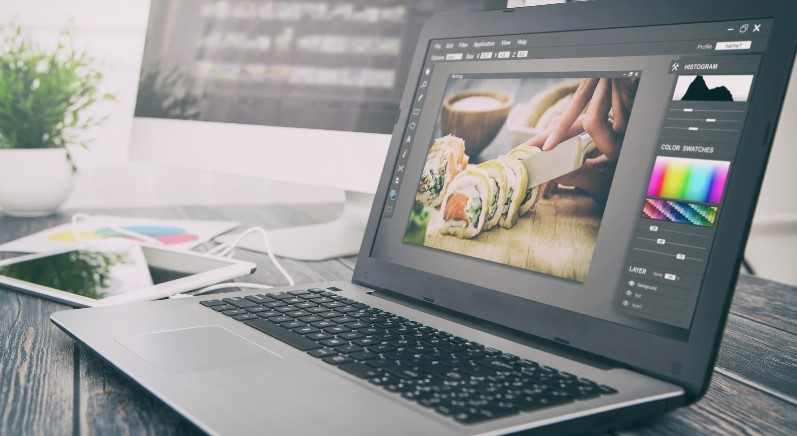
What Do JPG Files Offer PNG That Don’t?
Choosing between JPG and PNG files often seems like a daunting task, as to the casual content consumer, there is little difference. Understanding the nature of JPG and PNG will help you make the right decision.
Each format has its own unique characteristics and is used in different situations. JPG is characterised by its smaller file size, which is ideal for online, social media use.
PNG, on the other hand, is more suitable for work: compression is lossless, there is support for transparency, even after multiple resizing, the quality remains the same.
Which Should You Choose?
In summary, choosing the right format can make all the difference. Opt for JPG when you need smaller file sizes for photos or web images. You’ll save space without compromising too much on quality.
PNG is your go-to when dealing with logos and graphics that require transparency or high detail. That’s when clarity becomes non-negotiable.
Searching for a tool to convert and edit images? Softorbits offers user-friendly software that simplifies this task. This program makes working with JPGs and PNGs feel like a breeze. You can convert, resize, and edit images with ease. Both beginners and professionals will appreciate its intuitive tools.
What Is a JPG Image?

JPG, also known as JPEG, is a favorite among many for images, especially digital photos. You’ll find JPGs everywhere, so that’s a clue. This format shuffles pixels around, which reduces file size significantly.
JPGs use a method called Discrete Cosine Transform (DCT). It finds similar pixels and combines them for savings. Thanks to this method, JPGs can shrink a 20MB image to about 2MB.
Each time you save a JPG, though, it loses some quality. This is due to its lossy compression routine. Details vanish if you keep editing the same file. In many cases, JPGs work best for photos and images on the web. A little quality drop is fine when you need storage. This makes JPGs a smart choice if you’re short on room.
Advantages of JPG Files
- Smaller file sizes save storage space and are quicker to load on websites.
- Compatibility across devices and software makes them easy to use.
- Good for photos and general-purpose images where high detail isn’t critical.
Drawbacks of JPG Files
- No transparency support limits flexibility for logo and overlay use.
- Loss of quality with repeated saves, making it less ideal for high-detail images.
- Not ideal for text or images with sharp edges, as they may appear blurry.
What Is a PNG Image?

PNG, which stands for Portable Network Graphics, provides high-quality lossless compression. You get to keep every bit of data, even with multiple saves. Ideal for detailed graphics, PNG excels especially with logos and images containing text.
Crisp lines and clear details keep your designs looking sharp. Transparency features shine in PNG files, allowing for see-through backgrounds. This is one reason they are popular for web graphics and logos.
When you want to stand out, nothing says flair like a transparent logo. PNG files utilize LZW compression, which keeps pixels intact and avoids detail loss. Larger file sizes often accompany this superior quality.
Advantages of PNG Files
- Lossless compression keeps image quality intact, even after edits.
- Supports transparency, making it ideal for logos and overlay images.
- Excellent for detailed graphics and images with text or sharp edges.
Drawbacks of PNG Files
- Larger file sizes take up more storage and may load slowly online.
- Not always ideal for photos due to the higher detail.
Author Profile

- Blogger by Passion | Contributor to many Business and Marketing Blogs in the United Kingdom | Fascinated with SEO and digital marketing and latest tech innovations |
Latest entries
 TechnologyMarch 31, 2025The Future of Text-to-Speech: Transforming Communication in Healthcare
TechnologyMarch 31, 2025The Future of Text-to-Speech: Transforming Communication in Healthcare TechnologyMarch 28, 2025Top-Rated Tools Every Modern Recruiter Needs in Their Toolkit
TechnologyMarch 28, 2025Top-Rated Tools Every Modern Recruiter Needs in Their Toolkit marketingMarch 21, 2025How Businesses Can Leverage YouTube Video Makers for Marketing & Ads?
marketingMarch 21, 2025How Businesses Can Leverage YouTube Video Makers for Marketing & Ads? Online BusinessMarch 21, 2025Feature Requests as a Growth Strategy: How User Insights Drive Product Innovation?
Online BusinessMarch 21, 2025Feature Requests as a Growth Strategy: How User Insights Drive Product Innovation?

